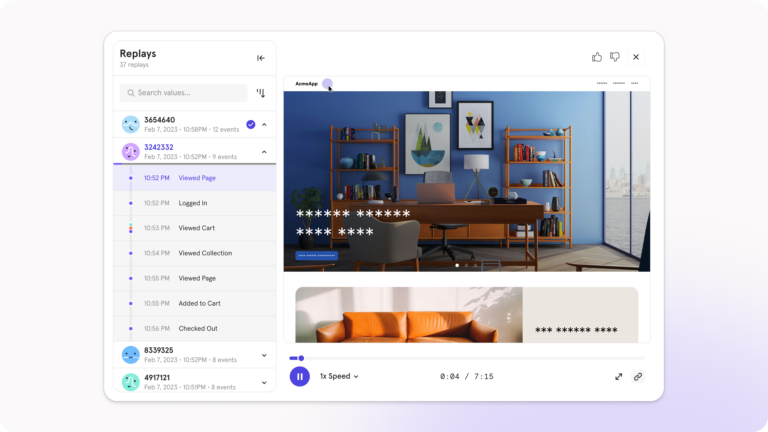
Your guide to 2020 product planning

You’ve done all the end-of-year analyses; celebrated your successes and learned from your failures; and eaten the last of the cookie crumbs from holiday happy hour—2019 is officially in the rearview mirror.
Equipped with the clarity and wisdom that only a new year can bring, you’re ready to embark on your 2020 product planning journey.
Below, we’re sharing the TL;DR from some of our most popular articles on product planning to date—from setting goals, to roadmapping, to identifying growth KPIs—to help guide you along the way.
1. Goal setting: 6 tips for keeping your team focused on what matters
With so much information available, the hardest part of using metrics to guide product planning is choosing where to focus. In this article, Mixpanel’s VP of Product and Design, Neil Rahilly, outlines his crucial steps for setting, achieving, and celebrating data-informed goals.
- Choose one goal: Commit to the hard work of figuring out the single most important thing you want to track. You’ll operate with greater focus and drive clearer, more immediate results than you would trying to improve 25 different things at once.
- Bake in priorities: Think about the impact your goals are having on the things that matter. For example, should all queries from all accounts be weighted equally, or are some more important than others? This thinking will help orient your business goals toward solving the most significant problems for the biggest customers.
- Let your customers measure success: Tracking deadlines or total number of features shipped can make you feel in-control, but it ultimately doesn’t help your customers succeed. Consider customer-centric metrics like product adoption rate or churn instead.
2. Building your roadmap: how to turn product gaps into product features
Far from being a thorn in every PM’s side, customer complaints (or “product gaps”) can become a true gift when effectively prioritized. In this article, Mixpanel’s Director of Product Mike Iampietro explains how to use product gaps to inform your roadmap.
- Discovering a product gap: While product gaps often come to you in the form of solutions (“I just need a feature that does XYZ”), it’s important to figure out the real problem your customer is trying to solve. Focusing on customer need helps you build product features that are actually useful while keeping your roadmap on track.
- Empowering the team to submit product gaps: Simply put, make sure that every customer-facing employee has the ability to identify product gaps and document them effectively.
- Analysis and prioritization: As much as we’d love to solve all of our customers’ problems, it’s essential for PMs to prioritize based on urgency and impact. Use a weighted ARR system to measure the business impact of each documented gap.
3. Measuring what matters: using growth KPIs to gain insight into your product’s future
Tracking leading indicators of success in the form of growth KPIs is essential for helping you make product decisions before growth has plateaued (or worse, tumbled off a cliff). In this article, we break down how to get started with growth KPIs when building or marketing a product.
- One size doesn’t fit all: Tailor growth KPIs to fit the unique realities of your business—for example, what does it mean to be “active” in your product? No stock definition or out-of-the-box dashboard can capture this for you.
- Summary KPIs vs Growth KPIs: The most successful companies assess themselves at multiple levels, using summary KPIs for a snapshot of digital health, and growth KPIs for a leading indication of long-term product success.
- Analyzing your metrics in Mixpanel: Define your growth KPI by segmenting users who enact desired behaviors in a specified timeframe, and build a clear visualization of its performance over time. Then, be on the lookout for unexpected dips so you can make changes before it’s too late. (Here’s a useful guide on how to drive website KPIs with Mixpanel if you’re just getting started.)
Is 2020 the year you finally identify your key growth KPIs?
4. Kicking off your beta program: how to launch killer products
We often hear that prioritization is one of the biggest challenges PMs face. But by making customer problem-solving their singular focus, PMs can prioritize actions that create business and customer value. This article takes a look at the upside of phased feature launches with customer feedback as the primary input for determining readiness.
- Creating opportunities: Track how customers are using features, dig into product gaps logged by your team (see building your roadmap above!), and—most important—talk to customers.
- Setting the context: Product development today is more evolution than revolution. With the PM acting as the “mini CEO” of the products they manage, it’s become more important to get a minimum viable product in front of customers, seek validation, iterate in beta, and finally, establish a problem-solution fit.
- Building your beta: Enter the beta testing phase with a clearly defined set of questions you want answered. Then, test with customers from a wide range of user personas. Incentives aren’t always necessary here—if they see value in the problem you’re trying to solve, they’ll be happy to participate.
Read more on beta testing with the customer in mind.
5. Success foundations: how to build a world-class PM team
Great products aren’t built without great teams, and the start of the year is the perfect time to think about strengthening your roster. Mixpanel’s Director of Product Management, Mike Iampietro (who we met above) takes us through his approach to building world-class teams in this article.
- Align on your “spec”: In this case, the spec is the job description plus the profile of the ideal candidate. Mike’s hiring spec includes things like customer focus, data proficiency and communication skills.
- Organize the interview process: product management is a highly cross-functional role, and candidates should be vetted by stakeholders across your organization (at a minimum: a PM, a designer, a developer, and a marketer). Look for individuals who will raise the bar for your entire team, and aim for a unanimous “yes”.
- But wait, there’s more: Watch for part 2 of building a world-class PM team, in which Mike will share advice for helping your team reach their full potential.
Stay on the lookout for more content to help guide your product decisions in 2020 (and beyond), and subscribe to the Signal to be notified when new content is published.





